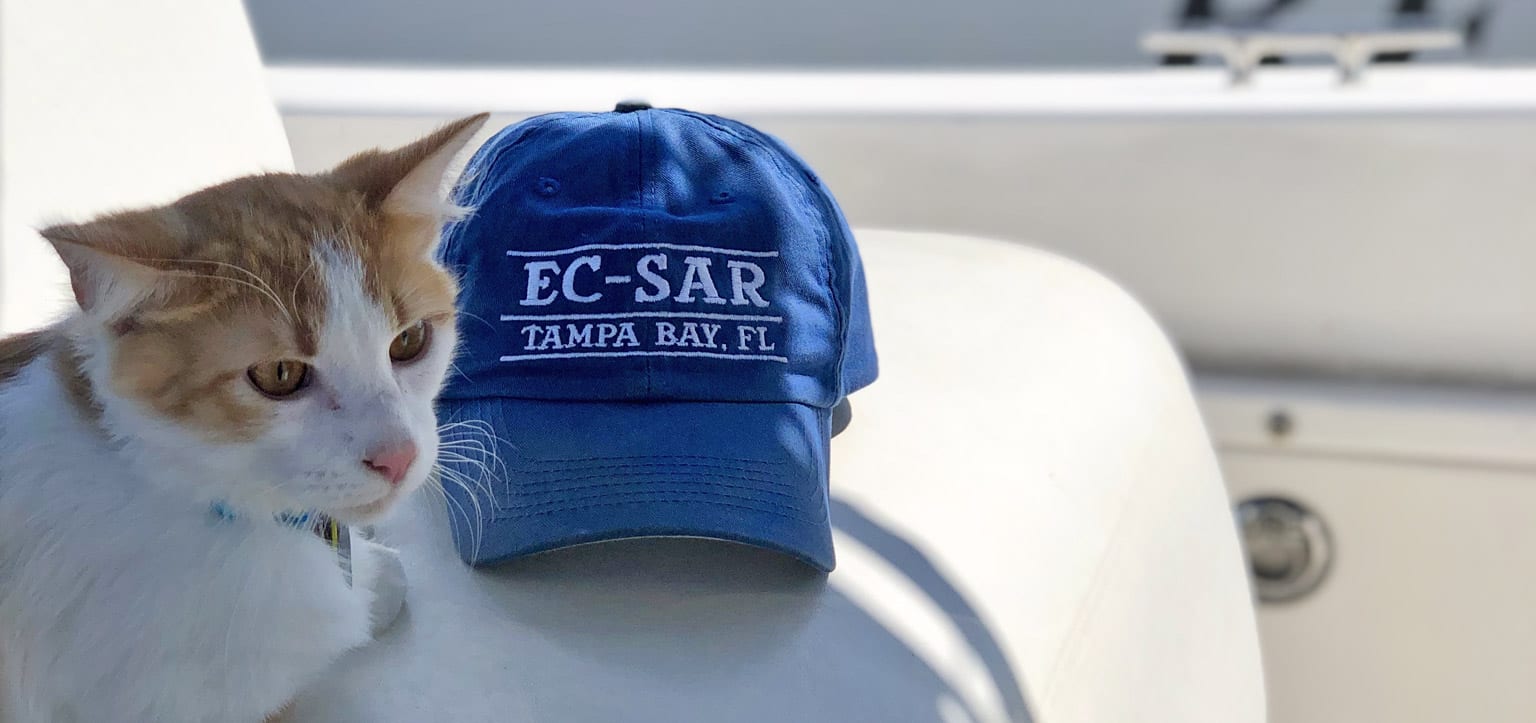
Many well-loved cats began their lives as free-roaming, just like Eckerd College Search and Rescue’s very own Skyway Kitty, who was rescued on the famous Sunshine Skyway Bridge. Photo: Jordan Kuperberg ’14
The more he learned about trap-and-kill animal shelters, the more compelled Associate Professor of Management Frank Hamilton, Ph.D., was to act.
He started by volunteering before he opened a nonprofit high quality, high volume, spay-and-neuter clinic. Hamilton also began using his most important asset—scholarship.
“I examined ‘Why do we do this?’ and started looking into issues of animal control, and it offended me as a taxpayer how much was spent on kill programs,” Hamilton said. “I saw this was an area that not many people were publishing research on.” Additionally, he never found any published research to support the effectiveness of trap and kill in urban areas. So he pursued it.
Hamilton’s fourth article on the subject—“Managing free-roaming cats in U.S. cities: An object lesson in public policy and citizen action,” co-authored with Peter Wolf, a research/policy analyst for the national animal welfare organization Best Friends—appeared in the May 2020 issue of the Journal of Urban Affairs, a peer-reviewed scholarly publication targeted at public officials and policymakers.
For nearly two years, Hamilton and Wolf pored over municipal data and reports from around the world to try to understand the true cost of each approach to managing cat populations: annihilation, trap-and-kill, trap-neuter-vaccinate-return (TNVR), and doing nothing. Research revealed that annihilation and trap-and-kill are costly solutions with little support from the populace. For instance, it took almost 19 years to annihilate cats from an uninhabited Australian island, a project undertaken to preserve the bird population there to appease wildlife biologists. “You know what happened? The mouse population on the island exploded and the birds kept dying. The mice were eating the eggs in the nest,” Hamilton explained.
Urban areas don’t choose annihilation because of its adverse public opinion and the possibility of unintentional pet deaths in the process. In the past, they have chosen trap and kill.
“Cities and counties hire people to trap and kill animals, and that sort of work wears on people, so the turnover is high,” Hamilton explained. “With trap-neuter-vaccinate-and-return programs, there are organizations that will offer funding to governments to pay for the cost of surgeries, and citizens will volunteer to help run them. There is no similar public support for kill shelters.” TNVR has published peer reviewed research supporting the effectiveness of this method.
Hamilton has employed student researchers in his work in the past, training Eckerd students of all disciplines how to analyze municipal budgets and find obscure data in far-flung places. Most of his student assistants consider themselves animal lovers, he said, and find his research fascinating.
Beyond reaching politicians who think in dollars and cents, Hamilton said the aim of promoting this work through the Best Friends Animal Society, which published its own article about the research last month, is to arm citizens walking into city hall meetings with information that can help move the needle.
“The average citizen can get some ammunition when making their case in front of the government,” he stated.








